Why should you get your tires rotated? Because it’s one of the easiest ways to extend the life of your tires and get the most miles out of them. And you only need to do it a couple of times a year.
Already know you need a tire rotation? Come visit us at one of our local stores or schedule an appointment.
Rotating the tires on your vehicle means moving them to different positions on your car or truck. This helps promote even tread wear on all four tires.
No matter how you drive, front and rear tires can wear at different rates. Tires that are mounted on the drive axle (the front two wheels on a front-wheel drive or back two on a rear-wheel drive) wear more quickly than the “free rolling” tires on the other axle.
Properly rotated tires can make for a smoother ride. It can also extend the life of your tires, saving you both time and money. By rotating your tires, you even out the wear to get the most tread life from every tire. Regular rotations are equally important, even if you have an all-wheel drive vehicle.
A good rule of thumb is every 5,000 miles. Depending on your vehicle, driving style, and tire type, you may need to rotate your tires more or less often. If you’re not sure, stop by Les Schwab. We’ll help you come up with a rotation schedule.
Regular tire rotations can help spot uneven tire wear early. Going too long between rotations may result in a wear pattern that can’t be fixed, no matter where the tire is moved on the vehicle. These wear patterns could result in the need for new tires sooner than expected.
Here are some ways to remember your next rotation.
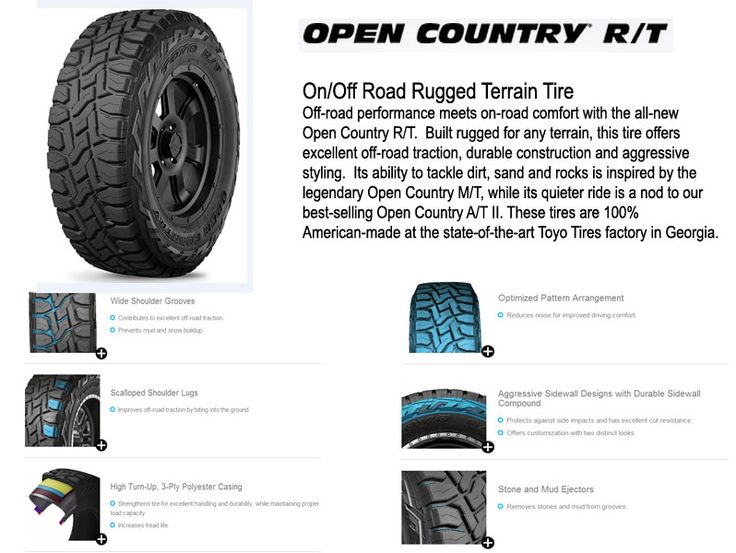
Getting your tires rotated every 5,000 miles is generally a pretty quick process. The professionals at Les Schwab will take the time to do a thorough tire rotation by also balancing your Les Schwab tires, checking your air pressure, doing a visual check of important safety systems, and documenting anything you should be aware of during the process. Once your vehicle is in our service bays, you can expect this procedure to be completed in about half an hour. Taking the time to make tire rotations a part of your normal vehicle maintenance regimen can add significant life to your tires, promote even tire wear for a smoother and more comfortable ride, and save you money in the long run.
The standard tire rotation is front-to-rear, but there are multiple patterns that could also help promote long tire life.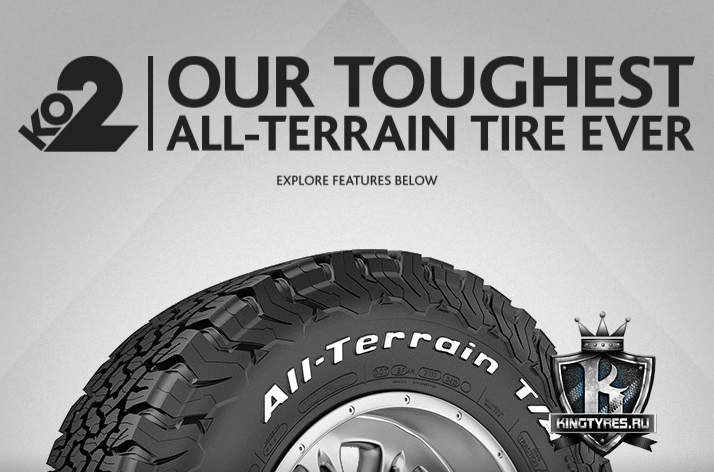
Here’s what Les Schwab tire pros consider to properly rotate and position the tires on your vehicle.
As always, check your owner’s manual for specific recommendations from the manufacturer.
If you have Les Schwab tires on your vehicle, rotations are free for the life of those tires. Plus we balance your wheels as part of the service. Don’t have Les Schwab tires? Our pros can still help maximize the life of your tires. Stop by your local Les Schwab for a quick estimate.
Don’t put tire rotations off. This simple task can maximize the life of your tires. When you buy tires from Les Schwab, we rotate them for free on most vehicles. Plus, we provide free rotation reminders by email. Just ask at your local store.
Just ask at your local store.
Off-roading can be a great way to explore new environments. However, this can often take a toll on your vehicle and your tires. To make sure that they last a long time, you need to make sure that you are taking care of them.
This often means performing activities like checking the pressure and repairing any punctures. But it’s also essential that you rotate the tires regularly.
Rotating your tires is especially important when you are off-roading. Often, the front tires will take more of a beating than the ones at the back.
Let’s look at everything you need to know about rotating your tires.
Before we dig deeper into how to rotate off-road tires, let’s look at why you need to do this at all.
When you are driving your car, you won’t wear all the tires equally. For example, when you’re off-roading you’ll often find that your front tires will be responsible for propelling the vehicle along the track.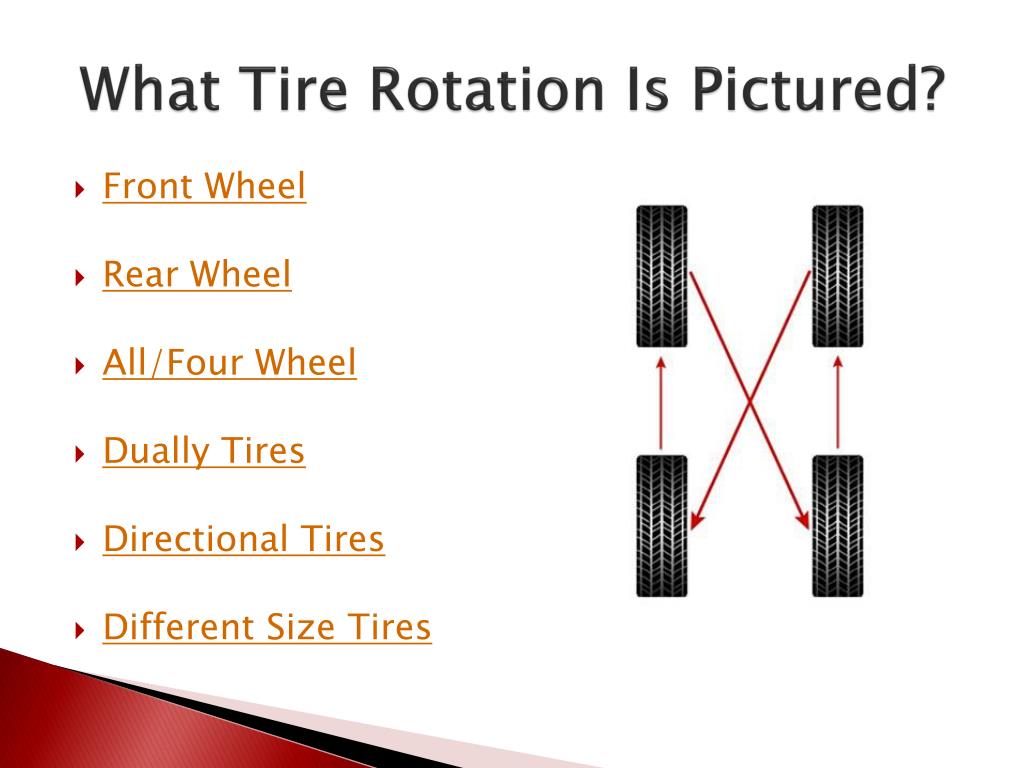
As a result, these tires will be under more stress than the ones at the back of the car. When this happens, you could be placing yourself in a dangerous situation. The effects of uneven wear can be seen in the image below.
Because of the different tread on the tires, you might not have the same braking power. You might also notice that your car has become less maneuverable. This makes you more likely to slide out during the corners.
When you rotate the tires, you’ll be able to make sure that all the tires are wearing at the same rate, reducing the chances that you will have an accident.
It will also allow you to increase the lifespan of the tire. In some cases, you might be able to get thousands of additional miles. This can end up saving a lot of money in the long term.
Now that we know why it’s so important, let’s look at how you can rotate your off-road tires. There are a few ways that you might do this, depending on the type of tires you have, and the type of vehicle you are driving.
The first that you need to establish is the type of tires that you have. The best way of doing this is by looking at the tread.
You need to figure out whether or not the tire is directional. A directional tire is designed to be used on one side of the vehicle. In this case, the tread will be in a V shape. If you’re still unsure, look at the side of the tire. These tires will often feature a rotation sign, which points in the direction that the tire is intended to spin. An example of a directional tire is pictured below.
There is a second type of tire. The non-directional tire can be placed on either side of the vehicle. As a result, they will have a more geometrical trend pattern. These tend to be the most common types of tires on the road, and are the best option for general driving. An example of what a non-directional tire looks like can be seen below.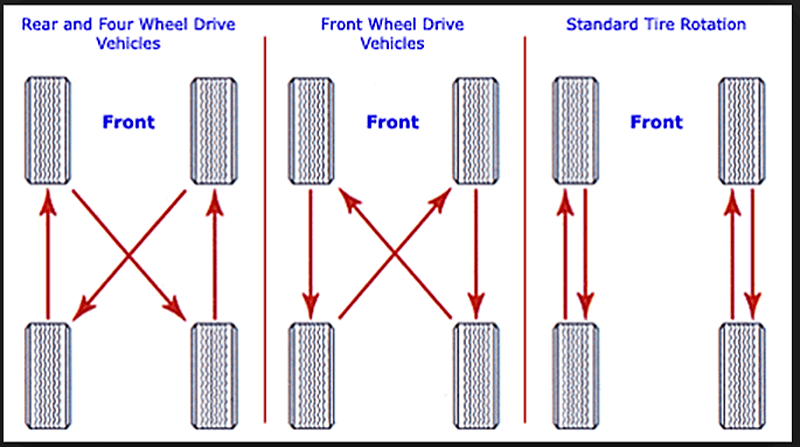
The reason we had to identify what type of tire you had is to make sure that you are getting the right rotation pattern. This is how you will swap the tires around.
Rotating Directional TiresGetting the right rotation pattern is especially important for directional tires. Remember, these can only be used on one side of the vehicle. If you accidentally put them onto the wrong side, they might not be able to get enough grip. This can allow water to get under the tire, increasing the chances that the car might start to hydroplane in wet weather.
In this case, you’ll need to take the tires from the back and put them onto the front axle. Then, take the ones from the front and place them onto the back axle. The below diagram will give you a better idea of what this looks like.
Rotating Non-Directional TiresThese types of tires can be driven on both sides of the car. This means that you have multiple rotation patterns to choose from. In this case, the type of car you drive will determine how you rotate the tires.
In this case, the type of car you drive will determine how you rotate the tires.
If you have a 4-wheel drive or all-wheel drive, you might want to use the rearward pattern. In this case, you need to take the back tires and replace them with the front ones, keeping them both on the same side of the vehicle.
Then, take the front tires and put them on opposite sides of the back axle. As an example, the old right front tire would become the new left-back tire. A great visual representation of this process can be seen in the below image.
In other cases, you might be driving a front-wheel drive. In this case, you will need to use the forward cross pattern. In this case, take the front tires off and move them to the back axle, keeping them both on the same side of the vehicle.
Then, take the back tires put them on opposite sides of the front axle. For example, the original right back tire would be moved to the left front side. You can see a diagram of how this process will work below.
By this step, you should know the pattern that you will use to rotate the tires. Now, we can get into the nitty-gritty. Before you start, make sure that you have everything you need. You should have the following tools:
Before you start removing tires, it’s important to make sure that you are in a safe environment. In this case, make sure that you have plenty of room to move around. You also need to make sure that the car is parked on a flat surface.
Before you start work, make sure that the parking brake is on. You don’t want to risk the car sliding off the blocks while you’re underneath it.
Once you’re sure that you’re safe, you can start jacking up the car. To do this, find the jacking point. This is a reinforced part of the car, which is designed to have the jack applied to it. If you put it in the wrong place, the jack might bend or even puncture where your jack is.
If you put it in the wrong place, the jack might bend or even puncture where your jack is.
To find the jacking point, you should refer to the owner’s manual. This will often tell you exactly where they are. For most vehicles, it will be just under the front and back bumper. Often, you will feel a metal notch, which has been designed to fit the top of the jack. As seen below.
Once it’s in the right place, you can start to raise the jack. This will start to lift the car. As you do this, regularly check that the jack is still sitting at the jacking point properly.
Once the car is lifted, you can use the lug wrench to remove the tire. Place it over the nut and remove the nut. To make sure that you don’t lose them, place them into the wheel cover.
Depending on how you want to proceed, you can remove all the tires at once. Or you can remove them one at a time and put them into their new position.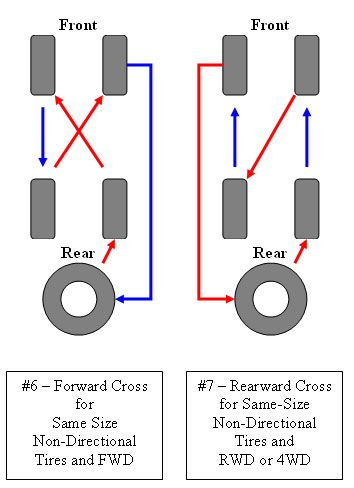
Once the tire is in its new position, according to the rotation plan, you can start to tighten up the tire. To make sure that it’s as secure as possible, you should tighten it diagonally. This will make sure that the wheel is evenly tightened. You can use the below diagram to see the order that each of the nuts should be tightened in.
Repeat this process until you’ve successfully rotated all the tires to their new positions.
Hopefully, you now feel confident rotating your tires. But, how often should you do this?
Often, this will depend on the way that you have been using them. As a general rule, you will need to look at the amount of wear that you have on the tires. When the wear becomes too excessive, you should rotate the tires. An example of excessive wear can be seen below.
When you are driving off-road, you might need to rotate your tires more frequently. This is because you will be placing more pressure onto the tires, increasing the amount of wear that you will be causing. For this reason, you will need to check the tires more often, to make sure that you know what condition they are in.
For this reason, you will need to check the tires more often, to make sure that you know what condition they are in.
There are often several reasons why one tire has more wear on it than another. First, you might want to think about the type of roads that you are driving on. For example, when you are driving along a gravel road, the rocks are thrown at the back wheels, so they have a higher wear rate.
You should also think about the way that the load has been distributed on the vehicle. For example, you might put heavy equipment in the back of the car, putting the back wheels under more pressure.
The suspension on the vehicle might also affect the types of forces that the tires are exposed to. This is one of the most common reasons why the front and back tires might have a different wear rate.
The way your tires have been inflated and aligned can often impact on the type of wear that you experience. The below image shows some of the most common tire wear patterns and what they can show about your car.
Finally, the biggest impact might be the type of tire that you are using. This can affect how durable it will be. To give you a better indication, let’s look at some of the most common types of tires on the market and how long they should last.
Let’s start by looking at one of the most common types of tires on the market. The all-terrain is designed for general driving.
In most cases, these will last for around 6,000 miles (10,000 km), or every three oil changes. After that, you should check them thoroughly and rotate.
Though they are designed to be relatively durable, if you are going off-roading, you might want to check them once you get back. The harsher conditions might require you to rotate them more frequently.
A tougher alternative to all-terrain tires, off-road tires are the best choice for exploring rougher trails.
When compared to all-terrain tires, you will notice that off-road tires are made from thicker rubber. You’ll also see a deeper tread, giving you more traction on dirt trails.
You’ll also see a deeper tread, giving you more traction on dirt trails.
Like All-Terrain tires, you should aim to check them every 6,000 miles (10,000 kilometers). This will be the best time to rotate them.
Finally, you might want to consider using mud tires, especially if you’re going off-roading after a heavy downfall. These tend to be the best when heading into very rough terrain, featuring very thick tread. This will give you lots of traction, even when facing mud.
Because they will be getting used more roughly, you might want to rotate them more frequently. In most cases, mud tires should be rotated every 3,000 miles (5,000 km).
You should also make sure that you are only using mud tires when you’re off-roading. They aren’t designed for day-to-day road driving. Remember, they have been designed especially for muddy tracks.
When on the road, they won’t have as much traction, which can cause you to start to lose control at higher speeds. Also, because they are heavier, you will lower the fuel efficiency of your vehicle. That being said, some MT tires are capable of being used on daily drivers, they just don’t offer the best ride.
Also, because they are heavier, you will lower the fuel efficiency of your vehicle. That being said, some MT tires are capable of being used on daily drivers, they just don’t offer the best ride.
One of the biggest reasons why people rotate their tires is to make sure that they last longer. However, even though you will be able to increase their lifespan, you will need to replace the tires eventually.
Often, the best time to spot potential problems is when you are rotating them. This will allow you to make sure that you replace them at the right time. When checking this, there are several potential warning signs that you want to look for.
First, you want to take note of any uneven wear on the tire. Even if you’ve been rotating them frequently, you might still notice this issue. If the problem gets too bad, you will have to replace the tires entirely.
Often, the uneven tread is caused when the car isn’t in the correct alignment.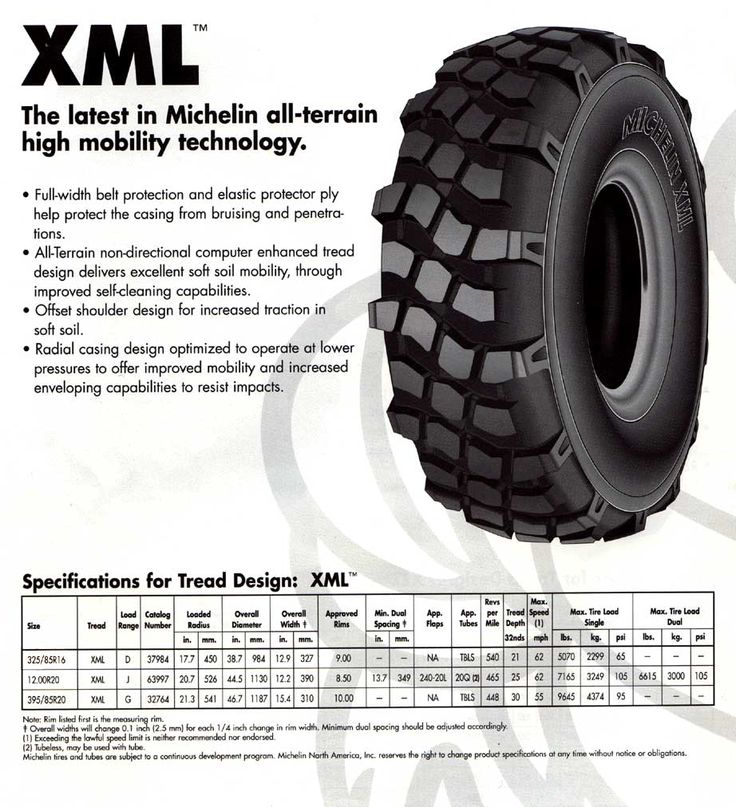 For this reason, you might want to check in with a mechanic. This problem can also occur if you haven’t been inflating the tires properly.
For this reason, you might want to check in with a mechanic. This problem can also occur if you haven’t been inflating the tires properly.
Another big problem is a puncture. This is common when you take your car off-roading, as sticks or stones might pierce through the rubber. For smaller punctures, you might be able to make a temporary repair yourself, as seen below. But, the safest option to replace the tire as soon as possible, getting a new one.
https://www.youtube.com/watch?v=mXNWqzkYXCQVideo can’t be loaded because JavaScript is disabled: Tire Puncture Repair Kit Instruction (https://www.youtube.com/watch?v=mXNWqzkYXCQ)
You should also know your tires used by date. As a general rule, you shouldn’t keep the tire on the car for more than 10 years. When they start to get older than this, you might want to consider replacing them, as they will be more likely to develop issues.
Finally, take note of the way it feels when you are driving the car. For example, you might notice that you are hearing odd noises or getting strange vibrations. These can be signs of a larger issue. As an example, it could be an indication that the wheels are out of alignment. For this reason, you should make sure that you take the vehicle into a mechanic, so they will be able to inspect it for you.
For example, you might notice that you are hearing odd noises or getting strange vibrations. These can be signs of a larger issue. As an example, it could be an indication that the wheels are out of alignment. For this reason, you should make sure that you take the vehicle into a mechanic, so they will be able to inspect it for you.
We rotate the tires to make sure that they wear evenly. This will make sure that you have the right amount of traction on the road. It will also extend the life of the tires.
Before rotating the tires, you need to consider the type of tire and car you are driving. This will tell you the right rotation pattern to use. Then, you need to make sure that the environment is safe. If it is, attach the jack, remove the tire, and place it into its new position.
How often you need to rotate the tire will often depend on the type of tire that you are using. In most cases, you will be able to rotate them every 6,000 miles (10,000 km) or every three oil changes. However, if you are using mud tires, you might want to rotate them more frequently, around every 3,000 miles (5,000 km).
However, if you are using mud tires, you might want to rotate them more frequently, around every 3,000 miles (5,000 km).
When you are rotating the tires make sure to inspect them, taking note of their condition, so you know whether or not you need to replace them.
0003Related materials
7 rubber signals: what the tire says about car problems
How do you know when tires are completely worn out and it's time to change them? Everything is simple. For summer tires, the limit is 1.6 mm of residual tread depth, and for winter (or all-season tires used in winter) - 4 mm. Modern summer tires can travel from 40,000 to 70,000 km, depending on driving style and vehicle characteristics. An average motorist rolls such a mileage on summer tires in 2-3 seasons. Moreover, wear implies not only a decrease in tread depth. For millions of cycles of deformation, the strength of the carcass and its adhesion to the layers of the rubber compound are violated. In short, every 2-3 years you should buy a new set of tires. nine0003
In short, every 2-3 years you should buy a new set of tires. nine0003
In case of irreparable damage to one of the tires and a relatively high total mileage of the kit, it is also worth considering replacing it. Well, or about buying at least a pair of new tires, which, for any type of drive, should be installed on the front axle. We put two tires back - the most decent of the remaining ones.
Many motorists drive only a few thousand kilometers a year. This does not mean that the tires will serve you for several decades. According to Russian requirements (GOST 4754-97), the service life of passenger car tires is 5 years from the date of manufacture. And for example, Continental recommends that all car tires (including the spare tire) older than 10 years old should be replaced with new ones. Therefore, with small runs, you can navigate for ten years. The date of manufacture of the tire is indicated on the sidewall. Usually it is an oval with four numbers. The first two are the ordinal number of the week in the year, the last two indicate the year.
The first two are the ordinal number of the week in the year, the last two indicate the year.
Related materials
How to change the car yourself - detailed instructions
Tires should be rotated periodically in accordance with the vehicle manufacturer's recommendations - information on this can be found in the owner's manual.
We can advise you to carefully use the tires and, most importantly, to store them correctly in the off-season. First of all, during storage, it is important to exclude direct sunlight from hitting the tires, which greatly age the rubber. Tires without rims should be placed vertically, and stacked on rims. nine0003
And before installing tires on a car at the beginning of the season, evaluate their condition. There should be no cracks in the tread and sidewalls. The tire should not be dry, it should remain rubbery and not look like baked plastic.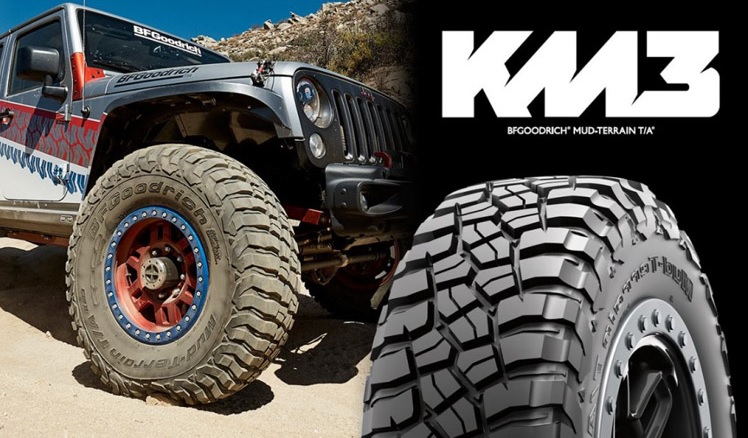
Related materials
Driving on badly worn tires - will I be fined or not?
Winter tires have a much shorter life span. They almost always fail due to the wear of the treadmill, because the tread of a new tire is 7–8 mm, and only 3–4 mm remain working height. If the tires are studded, then with such wear there are very few metal elements left, and the tire will not provide adequate safety when driving on a winter road. However, not only spikes, but also Velcro, with such a degree of wear, also lose most of their capabilities. nine0003
The real life of winter tires rarely exceeds 30,000 km. "Bald" winter tires without studs can be re-rolled in the summer, but their grip on a heated road surface will be very poor. This must be taken into account, especially when braking.
***
So: tires that have not yet worn out along the tread (that is, up to 1. 6 mm tread depth for summer tires, 4 mm for winter tires) are changed either ten years after the date of issue, or when the rubber layer cracks tires or damage. nine0003
6 mm tread depth for summer tires, 4 mm for winter tires) are changed either ten years after the date of issue, or when the rubber layer cracks tires or damage. nine0003
Our new video
Argo and Atlant are hot new items from Russian assembly
Does mud or snow interfere with recognizing car numbers?
3 most discussed posts in our social networks in 2022
Like this article? Subscribe and you will always be in the know!
Driving in Zen
News smi2.ru
In fact, the average life of any tire is 5-7 years, but a lot depends on how the owner treats his car. Aggressive driving, improper seasonal tire storage, unrepaired suspension/balancing problems, incorrect pressure and other errors can significantly shorten tire life. But worn tires can be a serious problem on the road: an increased risk of uncontrolled skidding, hydroplaning, even accidents is the price that drivers and passengers have to pay for using old tires. nine0003
nine0003
Each manufacturer indicates the so-called wear index on the tire profile, which most often looks like the inscription “Treadwear 100” and means a maximum of 48,000 km on a standard road surface (polygon). In a real environment and often not the most ideal roads, this number actually needs to be divided by 1.5 - we get 36,000 km.
By analogy, if the wear resistance index is 150, then this means “factory” 72 thousand km, 200 - 96 thousand km., and so on.
What are the dangers of worn tires on the road:
grip with the roadway deteriorates, which leads to an increased likelihood of skidding, accidents, hydroplaning in case of rainy weather;
reduced cross-country ability in off-road conditions;
increases the risk of a tire puncture while driving. nine0003
It is also worth remembering that the issue of tire wear is regulated by traffic rules, and you can get a fine for using “bald” rubber.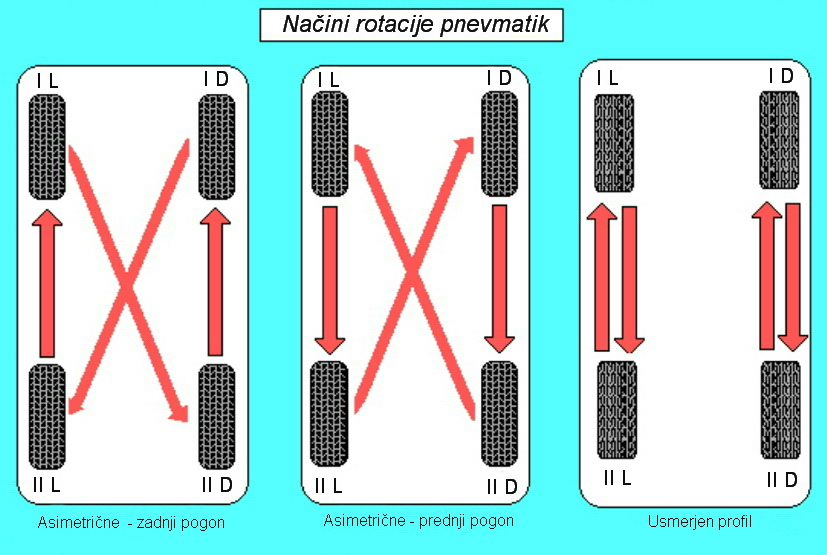 Knowing what maximum tire wear is acceptable, this is easy to avoid: 1.5-2 mm for summer, and 4-5 mm for winter (a more accurate figure is indicated by the manufacturer).
Knowing what maximum tire wear is acceptable, this is easy to avoid: 1.5-2 mm for summer, and 4-5 mm for winter (a more accurate figure is indicated by the manufacturer).
1. According to the wear indicator on the tire. To find this indicator, you need to inspect the side of the tire and find one of the markings: a triangle, a company logo, a snowflake, or the abbreviation TWI. If the tread has worn down to this indicator, it means that the tire needs to be disposed of urgently. nine0003
2. Many people in the old fashioned way prefer to use a 10-kopeck coin. Insert it into the tread with the inscription "10 kopecks" towards you, and if it is visible, the wear level is too high, you need to replace the tire. This method is convenient, but not entirely accurate: by measuring wear in different parts of the tire in this way, it will be difficult to estimate its unevenness by eye, and this is also an extremely important indicator.
3. It is optimal to use a special gauge, depth ruler or caliper for these purposes. This will allow you to measure the wear of the tread in different parts of the tire with an accuracy of up to a millimeter and understand if there is uneven wear. nine0003
It is optimal to use a special gauge, depth ruler or caliper for these purposes. This will allow you to measure the wear of the tread in different parts of the tire with an accuracy of up to a millimeter and understand if there is uneven wear. nine0003
If measurements show different results in different parts of the tread, it is important to determine exactly how your tires wear in order to understand where and what the operating error is.
If the tread wears more on the sides and the center wears off less, this means that the tire pressure is insufficient and the contact patch with the road is not correct. This leads not only to poor vehicle stability, but also to increased fuel consumption. nine0003
If the tread is worn down the middle but the sidewalls are fine, then your tires are overinflated. Sometimes this is done intentionally in order to save fuel, but in this case, the tires will still have to be changed ahead of schedule.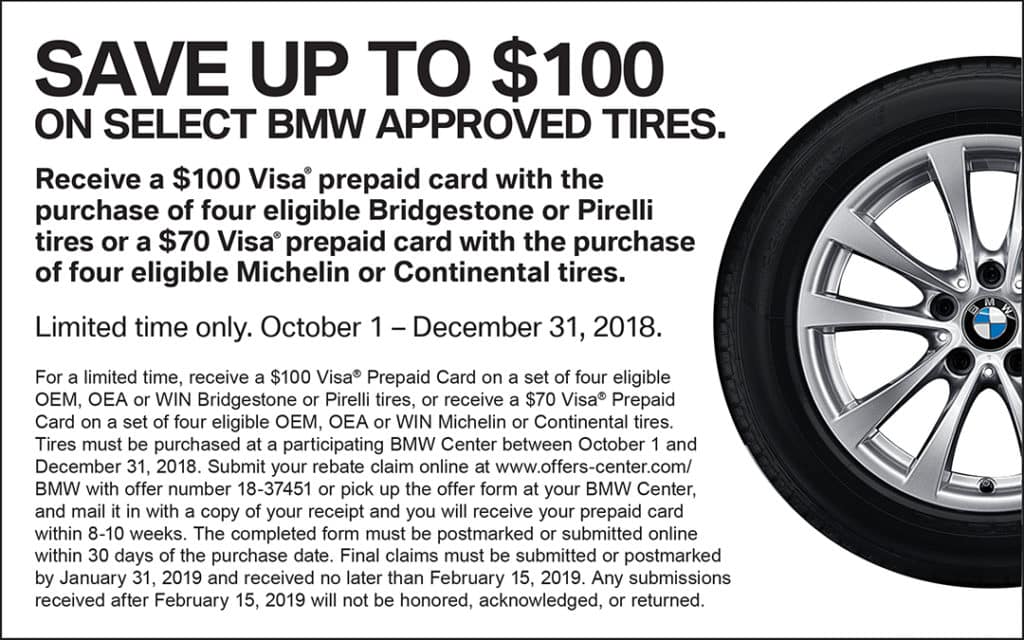
There is also the possibility of increased wear on the inside or outside of the tread - this indicates an incorrect camber. A visual table with wear options and their causes:
Cracks on the sides of tires can indicate frequent off-road driving, improper storage, low-quality rubber or long service life, as well as incorrect tire pressure.
Bulges or "hernias" on the sides of the tires appear as a result of the side part hitting hard obstacles. Tires with such damage are not recommended. nine0003
Dents on the tread indicate insufficient depreciation and unadjusted camber. Having found such damage, it is necessary to drive the car to the service and make sure that the suspension is in good condition.
Individual wear spots on the tread indicate aggressive driving / braking, skidding with wheel locks, or prolonged parking of the car in one position. nine0003
nine0003
Most often, this is required for the sale and purchase of used tires in order to orient the buyer in the degree of their wear. Many sellers give this figure at random, but this method has nothing to do with the actual assessment of the degree of tire wear. It is also important to understand that a conditional 50% wear for a summer tire is an acceptable value, while 50% wear of a winter tire tread is a sign that the tire cannot be used. Therefore, it is important to know how to accurately determine the percentage of tire wear so as not to get into an unpleasant situation. nine0003
Many people divide the actual tread height by the height of the same, but new tire, and get a certain percentage of wear. This would be correct, if not for one BUT: we cannot physically erase the tread to zero, and the law prohibits the use of tires with a tread below the permitted values.
You can calculate actual tire wear by dividing the difference between the new tire height and the actual tire height by the difference between the new tire tread height and the minimum possible tread height for that tire, and then multiplying this number by 100.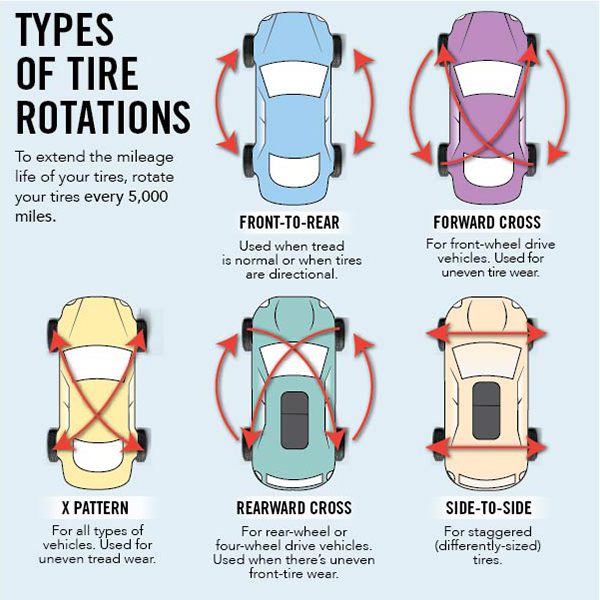 nine0003
nine0003
If it is impossible to find out the height of the same, but with a new tire, use the average values of your tire type:
| Tire type | Average tread height at start of use |
| Winter tires with Scandinavian tread | 10 mm nine0003 |
| Winter with regular or asymmetric tread | 9 mm |
| High-speed winter | 7 mm |
| Summer tires with classic tread nine0184 | 8 mm |
| Summer speed | 7 mm |
You can check summer tires for wear a little less often than winter tires, since in summer the tread depth is not so important for patency.
If you have assessed the condition of your tires on all of the above factors and realized that the tires are worn out, be sure to replace them with new ones as soon as possible.